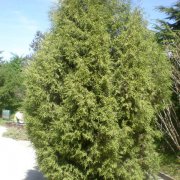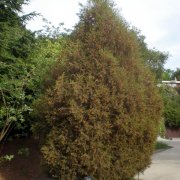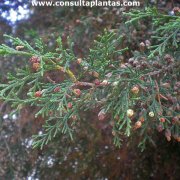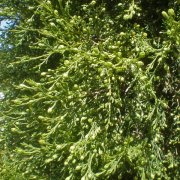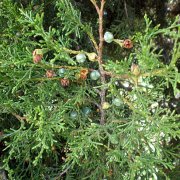Care of the tree Juniperus thurifera or Spanish juniper |
|
The Juniperus genus, Cupressaceae family, comprises 60 species of shrubs and trees native to the Northern Hemisphere. Some species are: Juniperus thurifera, Juniperus squamata, Juniperus phoenicea, Juniperus oxycedrus, Juniperus horizontalis, Juniperus conferta, Juniperus communis, Juniperus chinensis, Juniperus californica, Juniperus osteosperma, Juniperus drupacea, Juniperus x pfitzeriana (hybrid), Juniperus brevifolia. Common name: Spanish juniper. This species is native to the western Mediterranean region. They are dioecious trees with a pyramidal shape (in young specimens) that acquire a rounded or disorderly shape in adult specimens. They are very slow growing plants that reach 10 meters (32.8 feet). The bark is cracked and peeling off in strips. The evergreen leaves are dark green and take on the appearance of pointed scales. The flowers are not decorative: the female ones have a rounded cone shape and the male ones with small spikes. They bloom in the second half of winter. The fruits take 2 years to mature. Spanish juniper is used as isolated specimens in low maintenance gardens. Juniperus thurifera needs full sun exposure. It resists frosts down to -25 ºC (-1º3 ºF) and the intense heat of the Mediterranean summer. The ideal soil for these plants is a stony substrate; excellent drainage is important. Spanish juniper is a very low maintenance plant that is maintained with the occasional rains of the Mediterranean climate; it's not necessary to water. Juniperus thurifera does not need fertilizers or pruning. Spanish juniper is a very resistant plant to the usual pests and diseases. Propagation from seed is a complicated and very slow process; it's better to make cuttings planted in a sandy substrate (use rooting hormones). |
Images of the tree Juniperus thurifera or Spanish juniper |
Find plants
Juniperus thurifera or Spanish juniper | Care and Growing
© 2026 FavThemes
